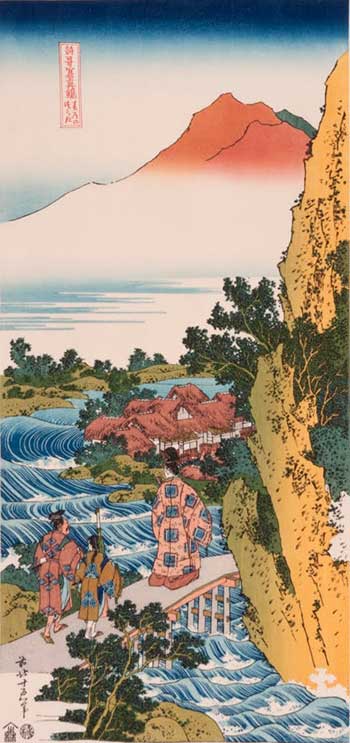Japan and Its Prints in the Floating World
(2018-19 Lecture)
Japanese picture prints had their origin in radical social and economic change early in the Edo period (1603-1868), and are a window on everyday life throughout the era. Their depiction of contemporary bourgeois culture marked a similarly radical change from traditional genres of Japanese art, such as the timeless scroll and screen paintings of the Kano and Tosa schools.
Historical Background and Lecture Description
In the year 1600, after more than a century of civil war among Japan’s feudal domains, the country was forcibly united by warlord Tokugawa Ieyasu. Proclaimed shogun (“generalissimo”) in 1603 by compliant Emperor Go-Mizunoo, Ieyasu and his heirs would go on to rule Japan until the Meiji Restoration in 1868.
Ieyasu’s chosen capital for his newly-designated shogunate was Edo, a small fishing village at the time whose name would come to demarcate the Tokugawa shogunate’s 265 year lifespan – the “Edo Period.”
By 1700, Edo (renamed “Tokyo” in 1868) had ballooned into one of the world’s largest cities, with an economy built by merchants and artisans who supplied the needs and wants of the rapidly growing capital. Increasingly well-off, this new bourgeoisie aspired to become art collectors. Beginning later in the 17th Century its print purchases began to turbocharge a burgeoning picture print trade. Equally important, its cultural tastes were to dominate print subject matter on into the distant 19th Century.
Those tastes centered on worldly pleasures – courtesans (geisha later on), kabuki theater, tea houses, and later, travel and sightseeing – the stuff of Edo era Japan’s “Floating World.” The lecture will showcase prime examples from each of these categories – with a focus on prints by the world renowned Kitigawa Utamaro, Katsushika Hokusai, and Ando Hiroshige, and will look at prints of other Edo masters.
It will also summarize the period’s historical background, explain the floating world concept, and show how classical Japanese prints were made and marketed, with contemporaneous illustrations of the print making process. Finally, there will be a display of Japanese crafts and antiques from the last 200 years.
© 2018 Tom Silver

